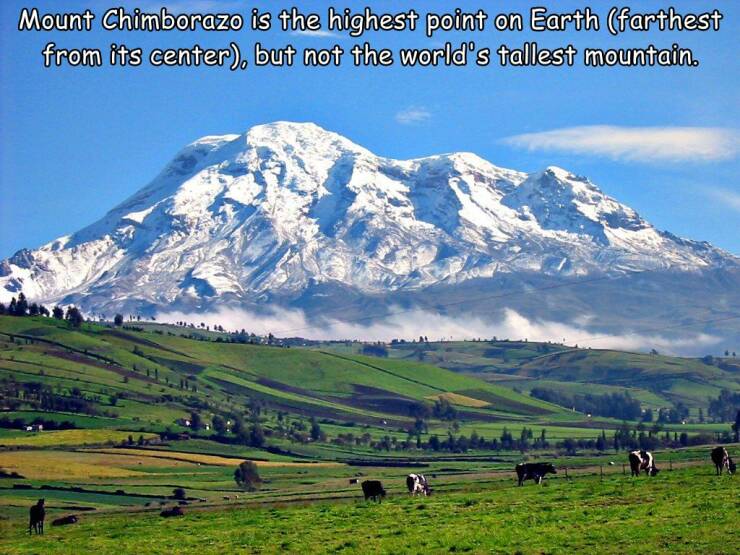11.

Tim 3 year s ago
Randy,
Correct. here is a quote from NASA.
While the Earth appears to be round when viewed from the vantage point of space, it is actually closer to an ellipsoid. However, even an ellipsoid does not adequately describe the Earth’s unique and ever-changing shape.
Our planet is pudgier at the equator than at the poles by about 21 kilometers. This is due to the centrifugal force created by the earth’s constant rotation. Mountains rising almost 9 kilometers and ocean trenches diving over 11 kilometers (compared to sea level) further distort the shape of the Earth. Sea level itself is even irregularly shaped. Slight variations in Earth’s gravity field cause permanent hills and valleys in the ocean’s surface of over 91 meters relative to an ellipsoid.
Correct. here is a quote from NASA.
While the Earth appears to be round when viewed from the vantage point of space, it is actually closer to an ellipsoid. However, even an ellipsoid does not adequately describe the Earth’s unique and ever-changing shape.
Our planet is pudgier at the equator than at the poles by about 21 kilometers. This is due to the centrifugal force created by the earth’s constant rotation. Mountains rising almost 9 kilometers and ocean trenches diving over 11 kilometers (compared to sea level) further distort the shape of the Earth. Sea level itself is even irregularly shaped. Slight variations in Earth’s gravity field cause permanent hills and valleys in the ocean’s surface of over 91 meters relative to an ellipsoid.













the picture is seconds before the crash.
Is Earth crashing into Jupiter or Jupiter into Earth?
is that a technical term lmao
It's to work on the car in #32.
Correct. here is a quote from NASA.
While the Earth appears to be round when viewed from the vantage point of space, it is actually closer to an ellipsoid. However, even an ellipsoid does not adequately describe the Earth’s unique and ever-changing shape.
Our planet is pudgier at the equator than at the poles by about 21 kilometers. This is due to the centrifugal force created by the earth’s constant rotation. Mountains rising almost 9 kilometers and ocean trenches diving over 11 kilometers (compared to sea level) further distort the shape of the Earth. Sea level itself is even irregularly shaped. Slight variations in Earth’s gravity field cause permanent hills and valleys in the ocean’s surface of over 91 meters relative to an ellipsoid.